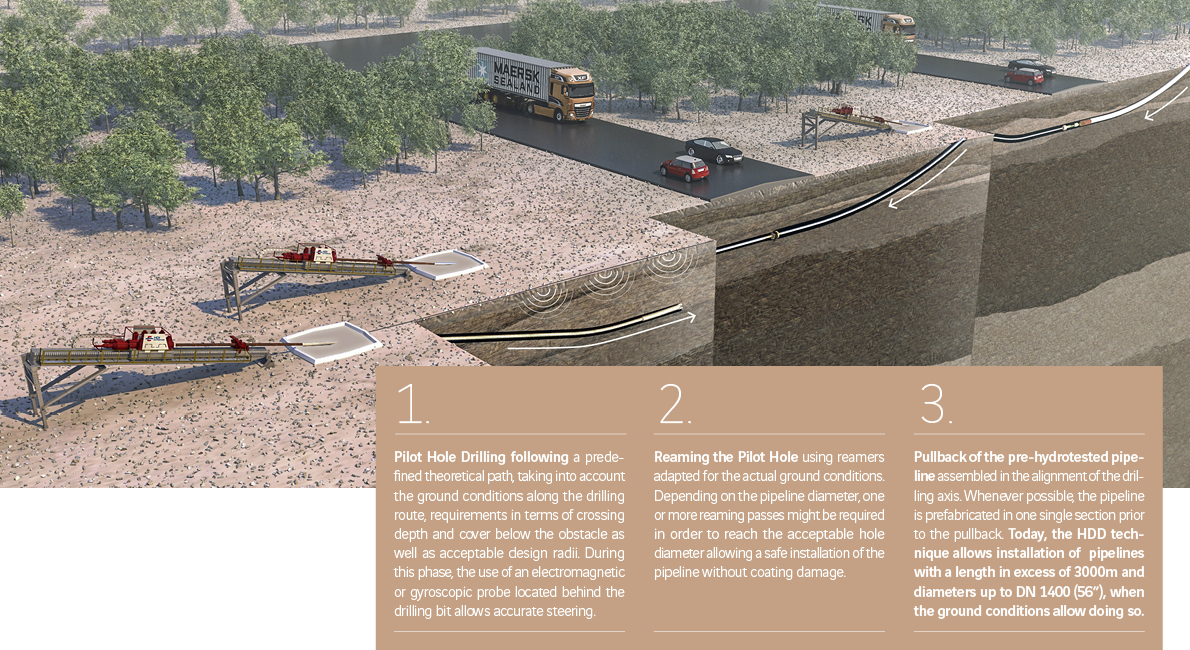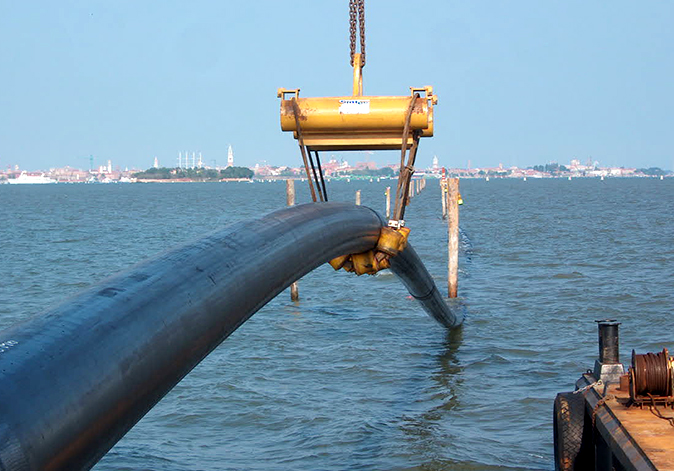Our expertise
Horizontal Directional Drilling is the core business for HDI. It is a “trenchless” technique that allows pipelines to be laid safely, with limited environmental impact on fauna, flora and neighbours.

Today, the HDD technique allows installation of pipelines with a length in excess of 3000m and diameters up to DN 1400 (56”), when the ground conditions allow doing so.
The two main applications are:
- Crossing of Onshore Obstacles,
- Crossing of Coastal and Surf Zones (Landfalls).
Onshore Obstacles
Onshore obstacles are typically waterways (rivers, streams, canals, etc.), roads or motorways. Many other applications are possible, such as crossing golf courses, residential areas, rock
outcrops, airport runways, dump sites, quarries under operation, environmentally sensitive areas, etc.
Landfalls
 Landfalls using horizontal directional drilling are more and more frequent due to the advantages they offer compared to traditional techniques:
Landfalls using horizontal directional drilling are more and more frequent due to the advantages they offer compared to traditional techniques:
- There is no environmental impact on coastlines (protected beaches, sensitive areas) or on residents (protected fauna and holidaymakers);
- Safe crossing the surf zones;
- Drilling at a sufficient depth to ensure protection of the pipeline against erosion.
As early as 1987, HDI won the "Project of the Year" award from the Civil Contractors Federation in Australia for the construction of the landfall in the Bass Strait for Esso Australia Ltd. The company continues performing similar projects on a regular basis.
Combination of various “Trenchless” techniques
For specific projects, HDI develops methods that combine Horizontal Directional Drilling with Microtunnelling or Direct Pipe techniques.
As an example, HDI executed in 2009 a turnkey project across the Havre Harbor Canal for Total using both Retractable Microtunnelling and Horizontal Directional Drilling techniques. This achievement earned HDI the “Tytan Award 2010”, for the best European Trenchless Project.
